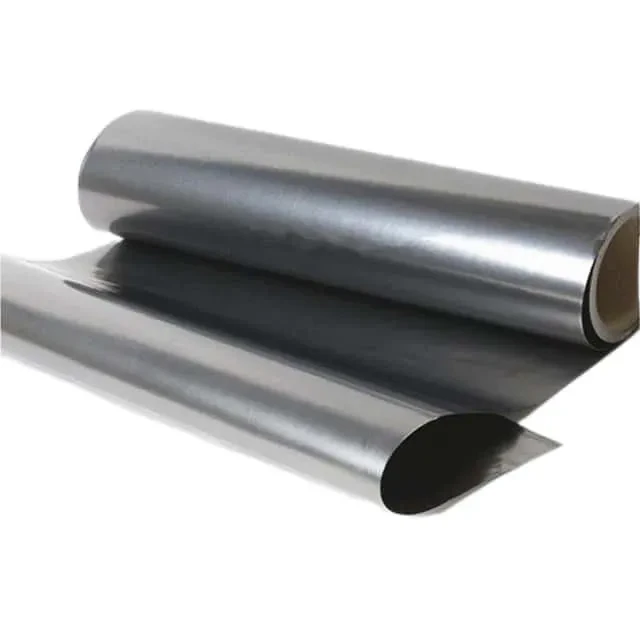Flexible graphite sheet are a sheet material made from high-purity graphite that has been chemically treated and expanded at high temperatures before being pressed. They retain graphite's excellent thermal conductivity and chemical stability while also offering good flexibility and compressibility, making them ideal for applications such as industrial sealing, thermal management, and electromagnetic shielding.

Horizontal thermal conductivity: 300–500 W/(m·K), far exceeding copper and aluminum, suitable for efficient heat dissipation
Vertical thermal conductivity: 5–10 W/(m·K), preventing the formation of localized hot spots
Strong heat distribution: Suitable for temperature equalization in high-power electronic equipment
Oxidizing Environments: Long-term stable operating temperature up to 450°C
Inert/Vacuum Environments: Withstands up to 3000°C
Thermal Shock Resistance: Resists cracking under rapid temperature changes
High Compression Resilience: Compression rate exceeds 40%, rebound rate >90%
Low Creep: Maintains sealing performance even after prolonged compression
Adapts to Irregular Surfaces: Fills even small bumps and indentations, ensuring reliable sealing
4. Chemical Stability: Resistant to acids, alkalis, and organic solvents
Radiation Resistance: Suitable for nuclear equipment
No aging issues, long service life
Volume Resistivity: 0.001–0.01 Ω·cm
Effectively shields high-frequency electromagnetic interference
Pipe Flange Seals: High-temperature and corrosion-resistant, suitable for petrochemical applications
Engine Cylinder Gaskets: Reduce the risk of fuel leaks
Valve Seals: Suitable for high-pressure, high-wear environments
5G Base Station Heat Dissipation: Replaces metal heat sinks, reducing weight
Power Battery Thermal Management: Improves electric vehicle safety
LED Lighting Heat Dissipation: Extends service life
Fuel Cell Bipolar Plates: Improves conductivity and corrosion resistance
Semiconductor Equipment Heat Dissipation: Heat dissipation in wafer manufacturing
Photovoltaic Module Thermal Conductivity: Improves solar panel efficiency
Rocket Engine Seals: Withstands extreme temperatures
Satellite Thermal Control Systems: Regulate cabin temperature
Electromagnetic Shielding: Protects precision electronic equipment
Can be cut with scissors, lasers, or water jets
Can be stamped into complex shapes (such as gaskets and seals)
Adhesive backing for easy fixing
Contains no asbestos, halogens, or other hazardous substances
RoHS/REACH compliant
Recyclable, reducing industrial waste
Long service life, requiring less frequent replacements
Overall performance outperforms traditional metal or rubber sealing materials
Application Scenario Recommended Thickness Recommended Type
Electronic Heat Dissipation 0.1–0.5mm Ultra-Thin High Thermal Conductivity
Industrial Sealing 0.5–3mm Enhanced Compression Resilience
High-Temperature Environment 1–6mm Oxidation-Resistant High-Purity Graphite
Installation: Apply even pressure to avoid localized over-compression
Storage: Keep dry to prevent oxidation
Maintenance: Regularly check seals and replace if necessary
Innovative Composite Materials
Graphite + Metal Mesh (Increased Mechanical Strength)
Graphite + Ceramic Coating (Enhanced Oxidation Resistance)
Flexible graphite sheet, with its unique thermal conductivity, sealing, and temperature resistance, has become an indispensable key material in modern industry. With the rapid development of new energy, semiconductor, and 5G technologies, market demand is expected to continue to grow. In the future, higher-performance composite graphite materials will further promote industrial technological advancement.
If you would like to find out more about flexible graphite sheet or to purchase other products, please contact us at sales@weitengroup.com, wwww.weitengroup.com.